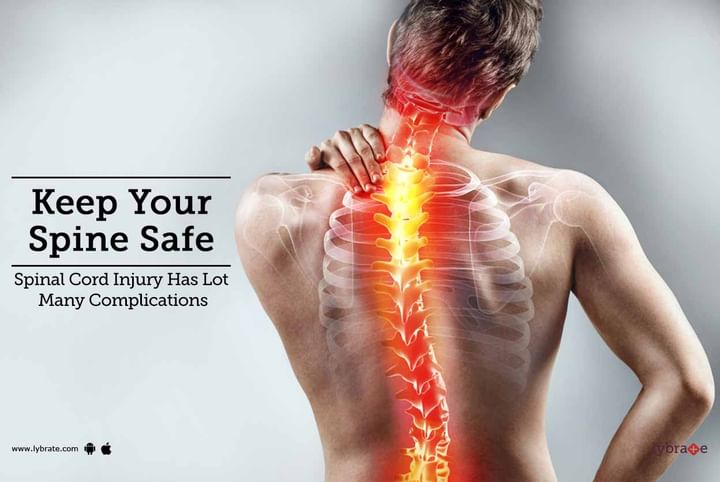Keep Your Spine Safe - Spinal Cord Injury Has Lot Many Complications
SPINAL CORD INJURY
Mechanism of the injury that can cause damage to the vertebrae with a resultant damage to the cord is usually a hyper flexion with rotation is less likely to cause damage to the cord.Injuries to the spinal cord can be caused by:
- Fracture or fracture with dislocation
- Sports injuries
- Industrial injuries
- Stab injury
- Gunshot injuries
- Surgical procedures: surgeries done in and around the spinal cord can cause damage to it.Fracture or fracture dislocation can be caused either due to collision of a heavy object over the head or directly over the spine.
COMPLICATION OF SPINAL CORD INJURIES
Pressure sores: In case of chronic illness with spinal cord injury, the patient is bed-ridden for a long time. If proper care is not taken patient develops pressure sores which becomes a major complication if infected.
Tightness and contractures: because of inability of the patient to move the lower limbs, patients lower limbs are positioned under the effect of gravity or under the influence of spasticity. The patient suffers from tightness, contractures and loss of ROM. If these are not treated in time it will lead to fixed mal alignment of joints which eventually will lead to deformity.
Osteoporosis: without adequate weight bearing imposed on the lower limb bones more and more calcium is released from bones which causes osteoporotic and fragile bones that is prone to have fractures even with trivial trauma.
Urinary Tract infection and urinary calculi: due to urinary retention in the spinal cord injury patient there is growth of bacteria primarily due to the presence of an indwelling catheter which acts as a main source of entrance for the bacteria.
Pain syndrome: the source of pain can be traumatic, spinal cord pain and musculoskeletal.
PHYSIOTHERAPY MANAGEMENT
The aims of the physiotherapy management consist of:
- Prevention of all secondary complications as a result of being bedridden.
- Restoration of functional independency to the maximum possible limit.
- Psychological counseling.
- Social and vocational rehabilitation.
- Family education
- Home adaptation.



+1.svg)
